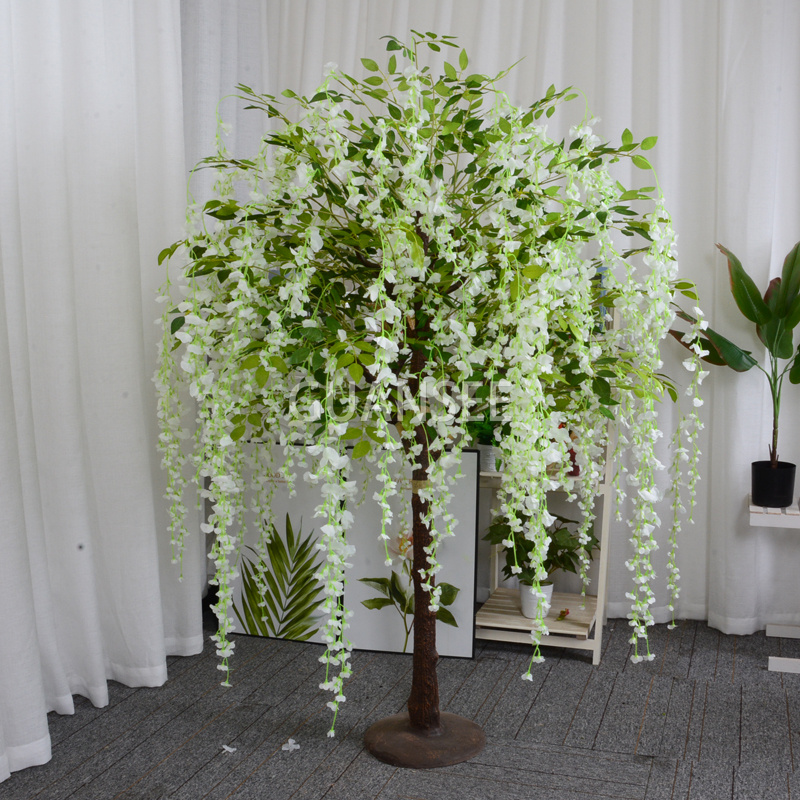
Artificial tree leaves generally refer to a class of artifacts capable of simulating natural photosynthesis, similar in shape, color and function to real leaves. These artificial leaves are generally composed of solar panels, catalysts and water, which can generate energy and release oxygen by absorbing solar energy and carbon dioxide. They are usually used in fields such as environmental protection and energy saving, such as building facade decoration, urban greening, etc.

Methods for making artificial plant tree leaves vary by manufacturer and product, but the general process involves the following steps:
Build the base: Choose the right material, such as plastic, paper, or fabric, and cut it to size and shape.
Add color: Use tools like dye or spray paint to add color to the leaves to make them look like real leaves. This process can be done manually or using automated machines.
Adding Texture: For added realism, texture or patterns can be added to the surface of the leaves. This can be done by methods such as printing or engraving.
Install solar panels: Some artificial leaves require solar panels to absorb solar energy and convert it into electricity. These panels can be internal or external, mounted on leaves or trunks.
Installing catalysts: To simulate photosynthesis, some artificial leaves need to be sprayed with catalysts, such as diethyl titanate, to help absorb carbon dioxide and separate hydrogen and oxygen from water.
Testing and tuning: Finally, the manufacturer needs to test the artificial foliage to make sure it will work properly and produce the desired results. Further adjustments and improvements can be made if required.

In conclusion, making artificial tree leaves usually requires multiple steps and techniques to simulate real leaves and achieve photosynthesis-like functions.